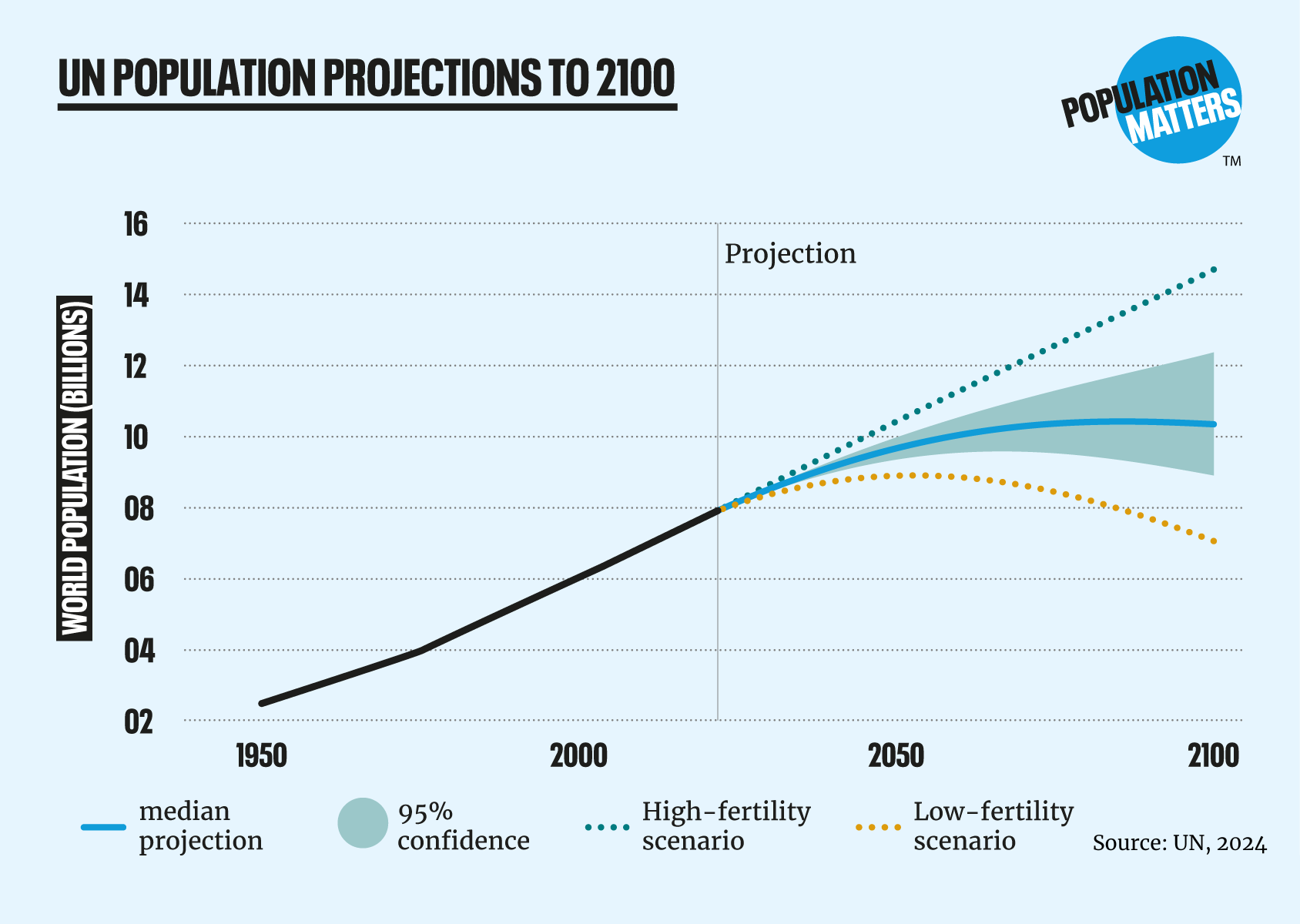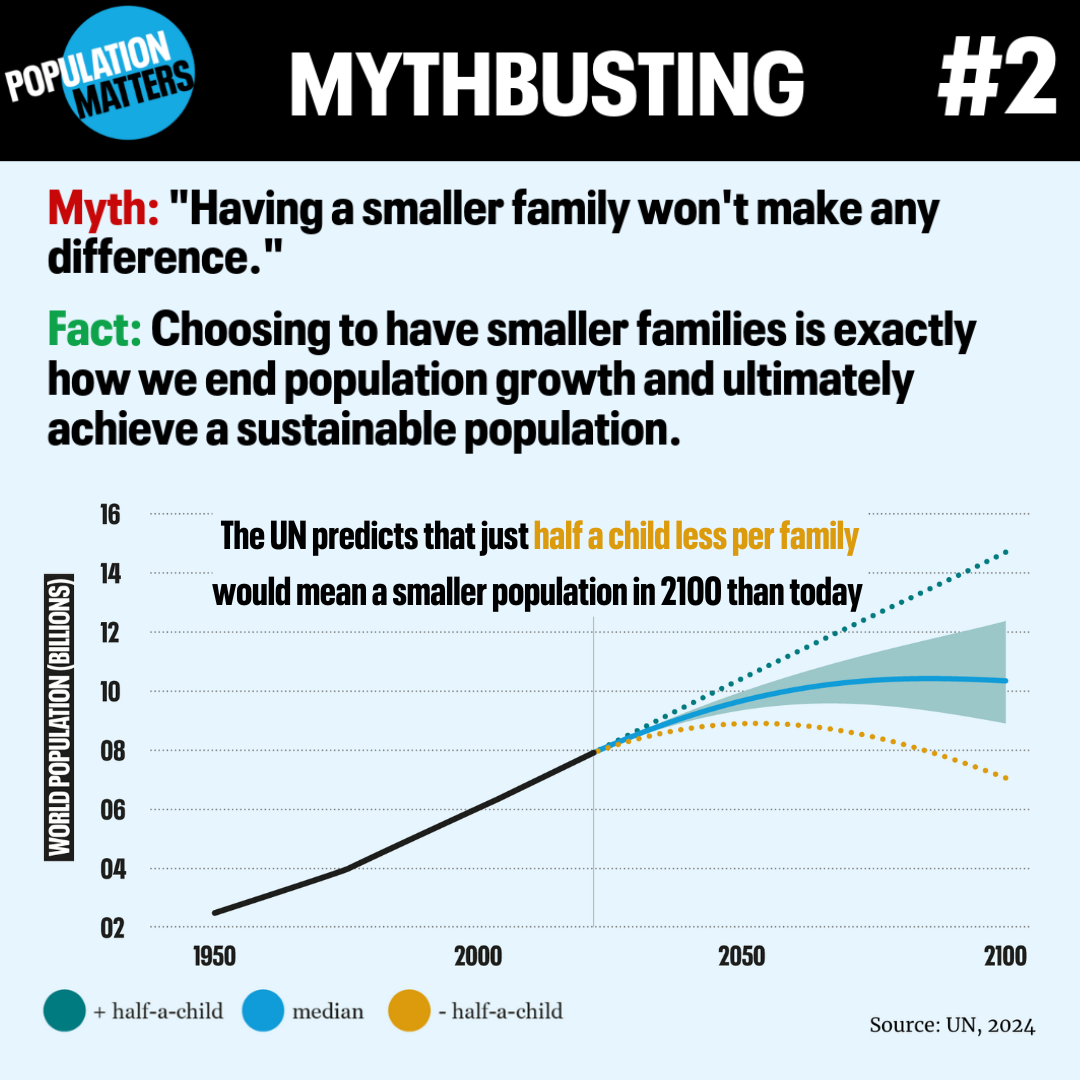
Debunking myths: Why Choosing a Smaller Family Does Make a Difference
A common misconception is that individual family size decisions have little influence on global population growth. However, the reality is quite different. Choosing to have a smaller family can affect not only global population trends, but also the future of the planet.
Family Size and Global Population Trends
Every two years, the United Nations (UN) makes projections for future population growth. This year, their most likely (median) scenario suggests the global population will peak at 10.3bn in the 2080s.

The UN provides several projections that highlight how fertility rates can shape the global population. These projections range from a “high-fertility” scenario – where larger families push the global population to nearly 15 billion by 2100 – to a “low-fertility” scenario, where smaller families stabilise the population at around 7 billion.
The difference between these outcomes illustrates how choosing a small family can dramatically shape long-term population trends and societal stability.
Why Family Size Matters in High-Consumption Regions
This is particularly relevant in high-income, high-consuming regions of the global north, such as Europe, North America and parts of Asia. Although population growth in these areas tends to be slower than in developing countries, the environmental impact is disproportionately larger. In fact, an individual living in the global north may have the same carbon footprint as dozens of people in lower-income countries.
In these high-consumption regions, choosing smaller families not only helps curb population growth but also eases the strain on global resources and reduces greenhouse gas emissions – an important factor in combating the climate crisis.
Encouraging Trends in Fertility Rates
Encouragingly, many countries across the global north are already seeing declining fertility rates. In Europe, for example, the average number of children per woman has fallen below two, which is below the population replacement level.
This shift helps slow population growth and makes it easier to address pressing environmental challenges. Lower fertility rates contribute to less demand on resources and reduce pressures on ecosystems, which are vital for a more sustainable future.
Lower fertility rates are often a sign of more educated and equal societies. As access to education improves and gender equality progresses, women tend to have fewer children, stabilising population growth while promoting better outcomes for both families and society.
The trend toward smaller families offers a range of benefits – balancing population growth, reducing environmental impacts and advancing social progress – collectively helping to create a more sustainable and prosperous future for generations to come.




